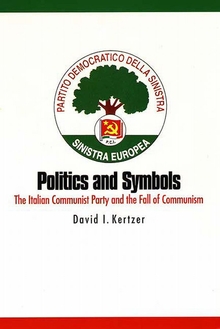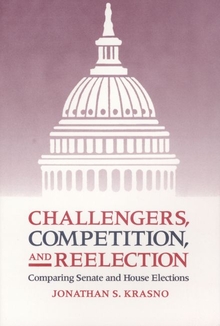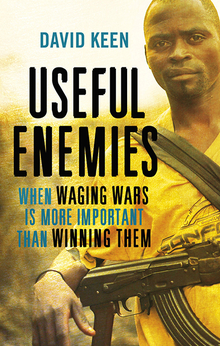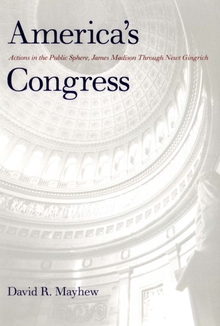Stalin and the Bomb
WARNING
You are viewing an older version of the Yalebooks website. Please visit out new website with more updated information and a better user experience: https://www.yalebooks.com
The Soviet Union and Atomic Energy, 1939-1956
David Holloway
In engrossing detail, David Holloway tells how Stalin launched a crash atomic program only after the Americans bombed Hiroshima and showed that the bomb could be built; how the information handed over to the Soviets by Klaus Fuchs helped in the creation of their first bomb; how the scientific intelligentsia, which included such men as Andrei Sakharov, interacted with the police apparatus headed by the suspicious and menacing Lavrentii Beria; what steps Stalin took to counter U.S. atomic diplomacy; how the nuclear project saved Soviet physics and enabled it to survive as an island of intellectual autonomy in a totalitarian society; and what happened when, after Stalin's death, Soviet scientists argued that a nuclear war might extinguish all life on earth.
This magisterial history throws light on Soviet policy at the height of the Cold War, illuminates a central but hitherto secret element of the Stalinist system, and puts into perspective the tragic legacy of this program today—environmental damage, a vast network of institutes and factories, and a huge stockpile of unwanted weapons.
"In a superb tour de force, David Holloway has produced a compelling and impressive history of Soviet nuclear weapons through 1956. . . . Stalin and the Bomb will remain the book to read."—Ralph Baierlein, American Journal of Physics
"A rich, imposing account, thick with a specialist's detail on how, when, and why Stalin achieved the atomic bomb."—Leonard Bushkoff, Christian Science Monitor
"Holloway's book is a good example of how new Russian source materials may be put to good use even if some core archives are still not open for research. It ought to serve as an inspiration for students of Soviet foreign policy history. . . . It ought also to inspire those who are aiming at syntheses in the writing and teaching of the history of Soviet foreign relations, and to get both historians and publishers to shy away from the search for sensational evidence that has consumed so much scholarly energy since the Moscow archives started to open up in the late perestroika era."—Diplomatic History
"The story is enthralling; its telling, unobtrusive and efficient; but most of all, the research on which it rests is enormously careful and complete."—Robert Levgold, Foreign Affairs
"Professor Holloway has assembled a great wealth of material, both documentary and oral, of a quality he can only have dreamed of when he began his research. . . . The book ranges widely over diplomacy and military policy, summarising the issues with great lucidity. . . . Here at last is Moscow's Manhattan Project: a story, and a book, worth waiting for."—Brian Cathcart, Independent on Sunday
"[A] groundbreaking history. It explores not just how the Russians made the bomb and the missiles to deliver, but the relationship of Soviet ideology to science."—Robin Blake, Independent on Sunday
"Every so often a volume appears that is recognized immediately for its broad sweep, detailed evidence, and compelling themes. This is such a book. . . . Holloway, a political scientist with a strong historical bent, benefited from glasnost in both superpowers and has skillfully woven a fascinating tale from formerly classified documents, interviews with once unreachable scientists, and a wide range of other more available materials."—Lawrence Badash, Isis
"Technically comprehensive and gripping. . . . What could have been a dry technical and analytical study is enlivened by the immensity of the issues at stake and the extraordinary characters populating the story."—Kirkus Reviews
"[A] riveting account of the origins of the Soviet atomic bomb that demonstrates that it was Hiroshima that impelled Stalin to make the enormous social investment to create a nuclear industry of the magnitude of the Manhattan Project."—Jay M. Gould, Nation
"An excellent new account of the origins of the Soviet nuclear industry."—Robert Service, New Statesman & Society
"In a well-documented, thoroughly researched and closely reasoned work, Holloway . . . shows how the USSR had the native scientific talent and political will to become a nuclear power within four years after the United States had detonated its first atomic bomb. . . . Stalin and the Bomb is the definitive work on the Soviet atomic and hydrogen bomb projects. It should be of crucial interest to anyone concerned with the history and politics of early Soviet large-scale nuclear technologies, and with the evolution of the Cold War."—Paul Josephson, New York Newsday (FanFare)
"A perceptive, highly informative, and altogether excellent book."—Rudolf Peierls, New York Review
"[A] hardheaded study. . . . A more complete story of Russian nuclear weapons than we have had yet of our own."—New York Times Book Review
"A superb history, showing how Stalin both helped and hindered his nuclear scientists, and telling more about the Soviet H-bomb project than is known about our own."—New York Times Book Review
"Stalin and the Bomb is a prodigious book. Mr. Holloway has plowed through the new sources available in Russia, turning up fresh insights into the cold war and, even more, into the conditions of intellectual life in Stalin's Russia. The study is a work on the largest scale, one that advances our understanding and is likely to remain definitive for years to come."—Priscilla Johnson McMillan, New York Times Book Review
"Holloway skillfully blends the technical and dramatic aspects of the Soviet bomb effort."—New Yorker
"A splendid, well-documented analysis of how the Soviet Union managed to build nuclear and thermonuclear weapons. . . . [It] will remain a superb overview of the early Soviet nuclear weapons program, providing a reference point for all future work on the subject. What is more, Holloway's analysis of cold war politics and of Stalin's foreign policy is of immense value in itself. His book is essential reading for historians, political scientists, and all others interested in the domestic and international consequences of Soviet (and post-Soviet) nuclear weapons."—Mark Kramer, Political Science Quarterly
"A groundbreaking, authoritative analysis."—Publishers Weekly
"Working from newly opened Russian archives, as well as interviews and memoirs, Holloway presents an authoritative analysis of the Soviet nuclear program from the discovery of nuclear fission to the hydrogen bomb tests in the mid-50s."—Publishers Weekly
"Altogether Holloway has written a convincing and readable study of a crucially important development in the history of humanity."—Revolutionary Russia
"Offer[s] a wealth of new information cautiously evaluated and contextualised in a carefully constructed, amply documented narrative presented in clear academic prose."—Barton C. Hacker, Russian Review
"An intriguing account of the formative years of the Soviet nuclear weapons program. . . . The book provides an authoritative analysis of the triumphs and failure of Soviet nuclear policy."—Daniel L. Wick, San Francisco Chronicle
"The author set a tall order for himself. He evaluates the relation between the dynamics of the nuclear project and the nature of Stalin's regime. He analyzes the relation between science and politics in the Soviet Union. And he deals with many political implications of the Soviet nuclear program, particularly its impact on Soviet foreign policy. . . . Superbly written."—Vladislav Zubok, Science
"[A] splendid history of the Russian program."—William Sweet, Sciences
"[Holloway] has produced a magisterial work by any standard. It is a prodigious demonstration of what can be done with newly available Russian source materials, most notably those generated since the onset of glasnost by Soviet participants in the landmark weapons programs of the Cold War."—Benjamin S. Lambeth, Strategic Review
"[A] magisterial study . . . by far the best account of how the Soviet Union acquired atomic and hydrogen bombs, and developed its nuclear policy."—Christopher Andrew, The Sunday Telegraph
"David Holloway's sound, balanced judgments and comprehensive research make Stalin and the Bomb a formidable work. He has written the first real history of the Soviet atomic programme, and it will be many years before it is superseded."—Steven Merritt Miner, Times Literary Supplement
"David Holloway's unassailably professional, honest account of how the Soviets got the bomb come like a gift from on high."—Virginia Quarterly Review
"A masterful account of the arms race from the Soviet side. . . . Prodigious research and careful analysis."—Gregg Herken, Washington Post Book World
"Holloway's Stalin and the Bomb is an outstanding new exposition of Soviet scientific progress during the difficult years of Stalin's growing paranoia. He has fully exploited the new information which has recently become available with the opening of formerly highly classified Soviet archives. I highly recommend this book to those who are interested in the evolution of Russian scientific thought during Stalin's regime."—The Honorable Paul H. Nitze, former leading arms control negotiator with the Soviet Union
Publication Date: March 27, 1996
50 b/w illus.








